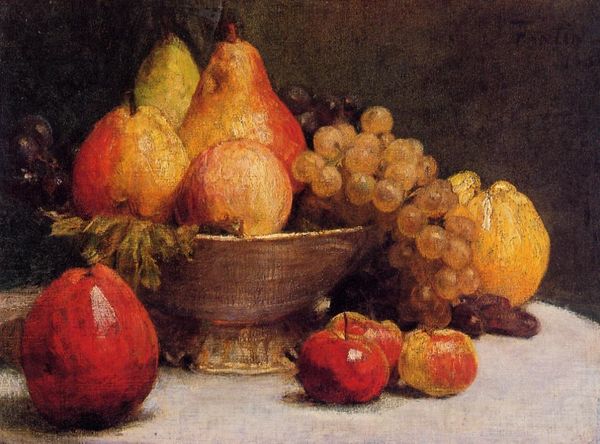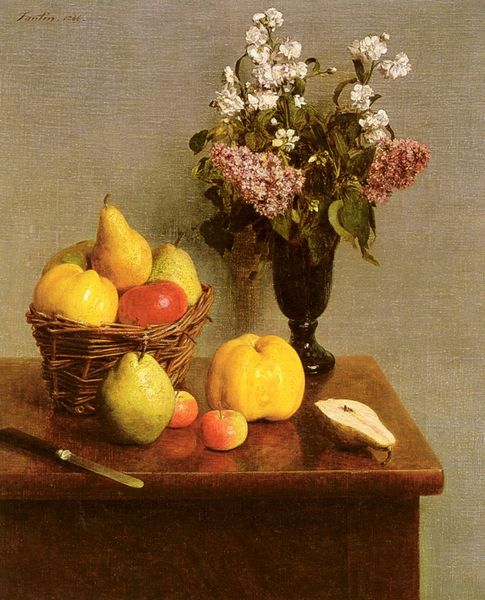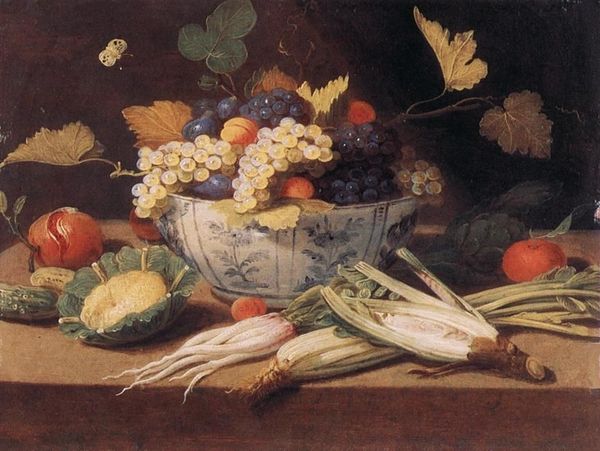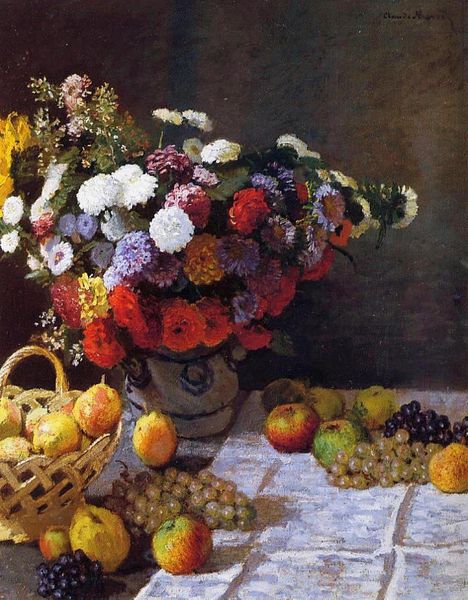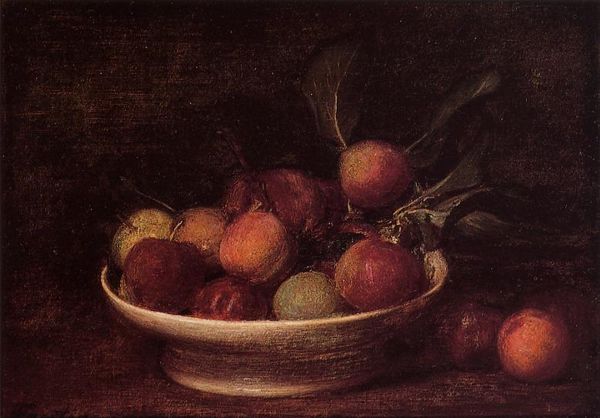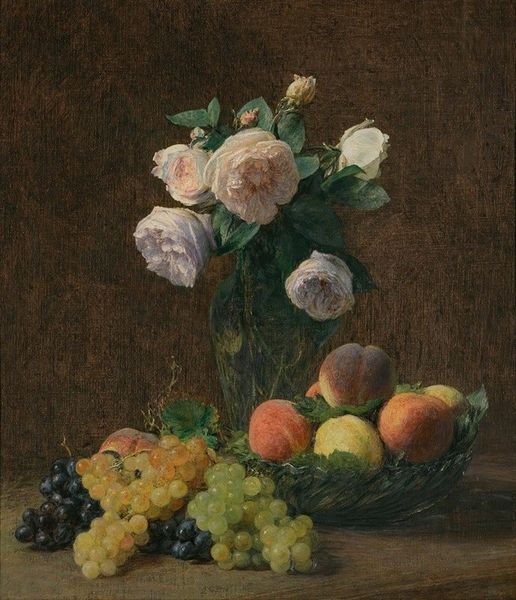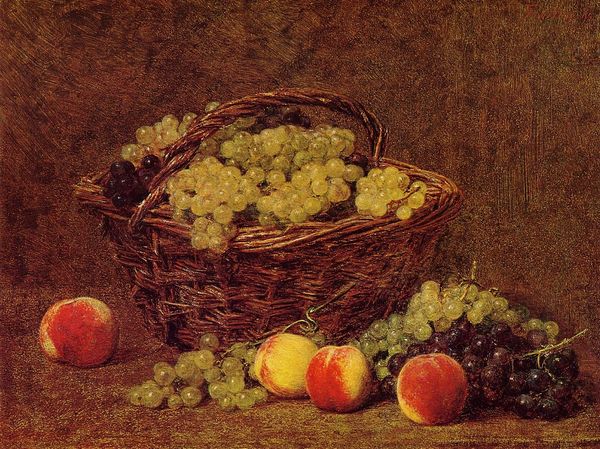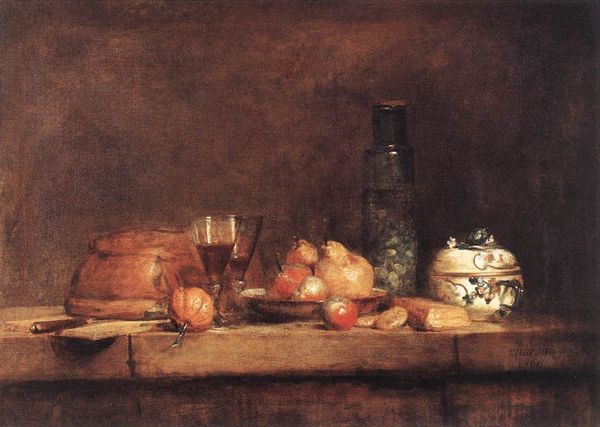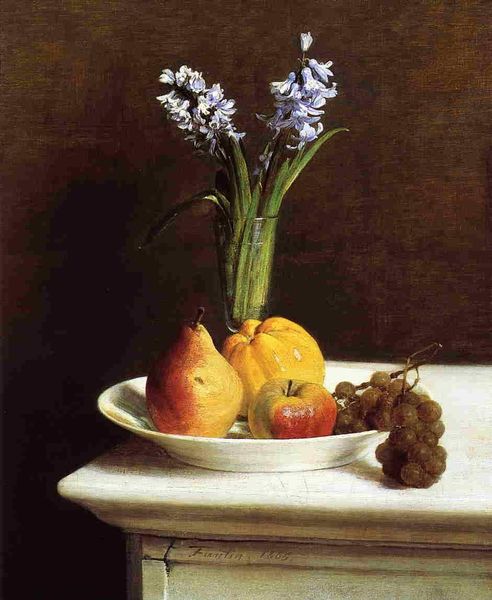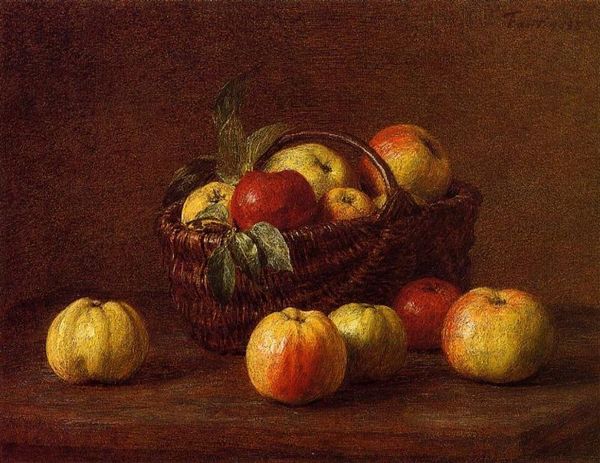
painting, oil-paint
#
painting
#
impressionism
#
oil-paint
#
oil painting
#
realism
Copyright: Public domain
Editor: Here we have Henri Fantin-Latour's "Flowers and Fruit on a Table," an oil painting from 1865. It’s lovely—there’s such a sense of abundance and late summer light. I’m curious, what stories do you see when you look at this piece? Curator: It’s interesting you use the word "stories." Fantin-Latour’s still lifes were often read as a kind of resistance, perhaps even a quiet rebellion. Think about it: in 1865, France was on the cusp of immense social and political change, yet here is an artist focusing on the domestic, the personal, the seemingly apolitical. This choice itself becomes a statement, doesn’t it? What does it mean to turn inward during times of upheaval? Editor: That's a compelling point. I hadn't considered that his subject matter could be read politically. It almost feels subversive to celebrate such simple beauty amidst societal turmoil. Curator: Exactly. The "simple beauty," as you say, needs unpacking. This display of ripe fruit and flowers, carefully arranged, signifies more than mere aesthetics. Consider who had access to such abundance in 1865, and what role did the controlled environment of still life play? It speaks to class, privilege, and the artist’s deliberate choice to frame these objects. Do you think his position might challenge the dominant academic styles of the time? Editor: It really does challenge it. I suppose the realist aspect of this work, capturing such a direct representation, challenges a traditional artistic position. Now, viewing Fantin-Latour’s choice as a challenge, I also realize that by selecting domestic subject matter, Fantin-Latour deliberately included himself and others like him, an indirect type of activism? Curator: Precisely! By emphasizing this aspect, the painting opens to interpretations concerning agency and the right to be visible, or more broadly, to represent what one chooses. Editor: This really shifts my perception of the painting. It's more than just a pretty still life; it's a commentary, a reflection of its time, and perhaps even a statement of artistic and personal autonomy. Thank you! Curator: Indeed! Analyzing the context of this seemingly simple artwork highlights the potent layers of meaning art can hold and how relevant historical and social awareness is to enriching interpretation.
Comments
No comments
Be the first to comment and join the conversation on the ultimate creative platform.
